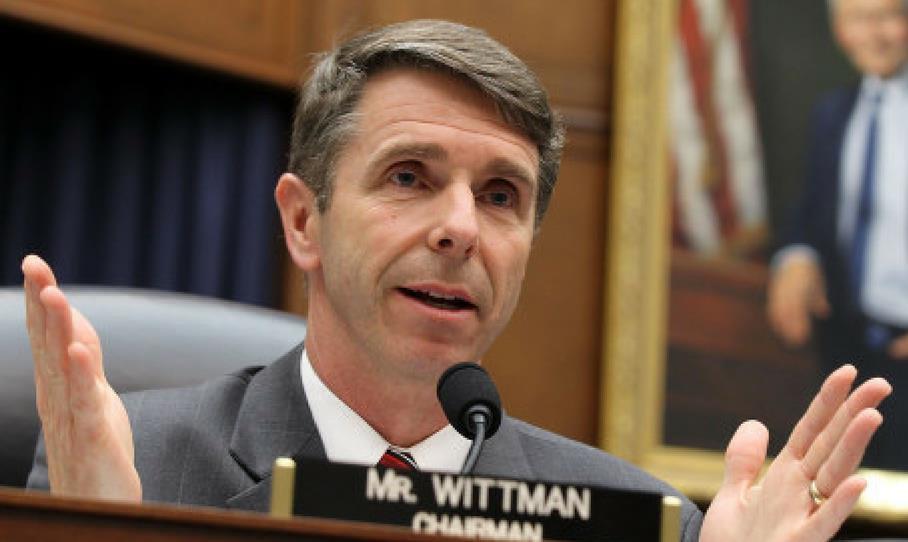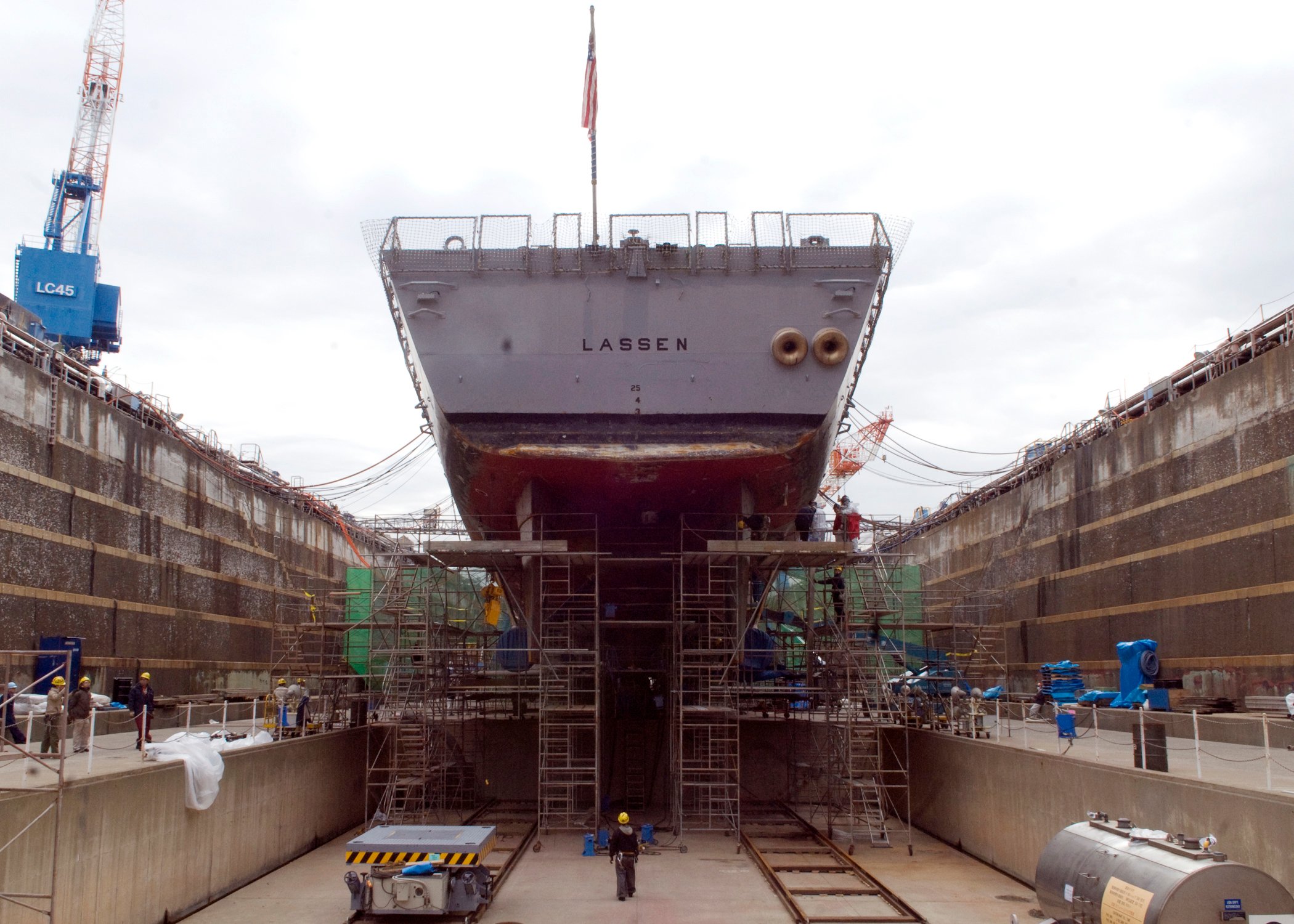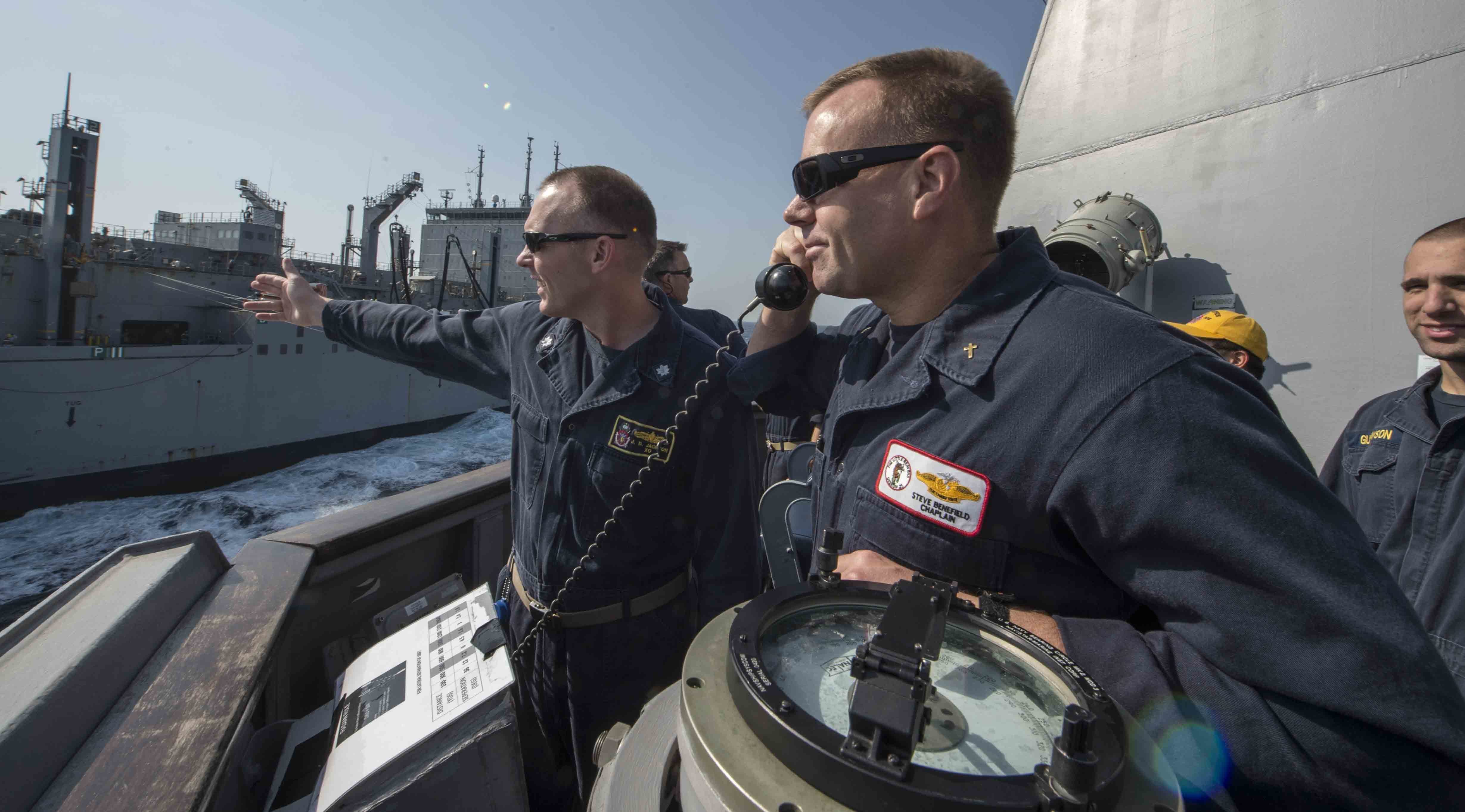
House Armed Services Committee members will have a chance on Thursday to ask Navy leadership how it will take action in the aftermath of two recent surface readiness reviews and to follow up on this week’s announcement of criminal and administrative actions taken against Navy officers involved in last summer’s two fatal surface ship collisions.
The HASC readiness and seapower and projection forces subcommittees will host a joint hearing Thursday afternoon with Navy Secretary Richard V. Spencer and Chief of Naval Operations Adm. John Richardson.
Rep. Rob Wittman (R-Va.), who chairs the seapower and projection forces subcommittee, told USNI News on Wednesday that his primary objective for the hearing is to “determine the process that they’ll go through to synthesize those two (readiness) reports to come out with an action plan, and then the timeframes they propose to put into that action plan.”
Richardson told USNI News last week that he would create a single comprehensive plan based on the recommendations of the two reports, something his staff is still working on.
Though Wittman said he wanted to hear what the Navy had to say about a couple topics before the committee took action, he made clear to USNI News that “I think the outcome will be a number of directives in this year’s [National Defense Authorization Act] that will respond to these two incidents and to the comprehensive review and the strategic readiness review.”
One particular area Wittman is eyeing is the creation of “a single Tier 2 Echelon command consolidation” that would put one organization, likely U.S. Fleet Forces, in charge of all man, train and equip policy for the entire Navy. Under current law, U.S. Fleet Forces Command and U.S. Pacific Fleet may implement different policies in the East Coast and West Coast fleets. A consolidation of that authority would likely be accompanied by “doing away with the 4th Fleet and reestablishing the 2nd Fleet, so there’s an East Coast and a West Coast comparable command structure for fleet management” and preparation of deployable forces, Wittman said.
Wittman listed four other priorities of his that he wants to solicit Navy feedback on in the hearing before determining what, if any, legislation to write on the topic. He said he wanted to discuss manning in the Navy to ensure that forward-deployed ships are able to plan for manning at a maximum-needed level and not a minimum level; ship repair capabilities in Japan and what it would mean for the rest of the fleet to ensure that Forward Deployed Naval Forces (FDNF) ships are able to return to the United States every seven to 10 years for a deep-dive maintenance and modernization availability; how to create more expertise within the ranks; and how to provide new junior officers with more at-sea experience before reporting for duty.

On the expertise issue, Wittman said he wants to see “a depth to the surface navy that we see in other areas – we see those things happen in aviation, we see those things happen in the submarine force.”
“Now in the surface navy everybody is encouraged to generalize, so you get a little bit here, a little bit there, you get a little bit of knowledge on engineering, you get a little bit of knowledge on ship systems, you get a little bit of knowledge on combat systems, you get a little bit of knowledge on seamanship and navigation – but never a place where you can really establish expertise,” he said.
“And then as these individuals make their way up through command and make decisions later on in force structure, in force operation, I think it’s very useful to have an area of specialization – so somebody that works in the ship systems engineering area can really be an expert there, so that as they pursue their Navy career they are the subject matter expert there, so when there’s decisions made on operations, decisions made on acquisition, you have somebody there who’s a real expert.”
Regarding junior officer at-sea experience, Wittman said “simulation is great” but that “taking a junior officer as an ensign, putting them directly at sea onboard a surface ship with them having served no time at sea on the bridge of a ship, and having them stand watch and say, okay, now you’re going to assume a rotation on the bridge commanding the ship, it expects a little bit too much.”
The six issues Wittman identified were also mentioned in the U.S. Fleet Forces Command-led Comprehensive Review on Recent Surface Force Incidents and in the Navy Secretary-directed Strategic Readiness Review.

Separate from these two reviews following two fatal surface ship collisions and two non-fatal mishaps in U.S. 7th Fleet, the Navy also announced it was charging several officers involved in the fatal collisions with negligent homicide, dereliction of duty and hazarding a vessel. USNI News also reported this week that Commander of Naval Surface Forces Vice Adm. Tom Rowden would leave the Navy ahead of his planned Feb. 2 retirement as a result of the incidents.
Wittman told USNI News, “I find this to be very appropriate – extraordinarily serious, but very appropriate in light of the severity of these two incidents and the things the surface navy is facing. I’ve been very encouraged by Navy actions.”
“I think the Navy is elevating this to the proper level: from the actions here with Adm. Rowden to the issues with court-martial and the charges placed upon the officers involved in these incidents, I think (the actions) rise exactly to the level that is necessary to demonstrate the seriousness of these issues,” he continued.
“And I think it’s extraordinarily important to make sure the Navy sends a signal not just to folks outside the Navy but also within the Navy as to the level of operation and responsibility and accountability they expect within the Navy, and then if that doesn’t occur the severity of actions that will result because of that. I think that sends an extraordinarily strong message both inside and outside the Navy as to the importance of this issue.”





